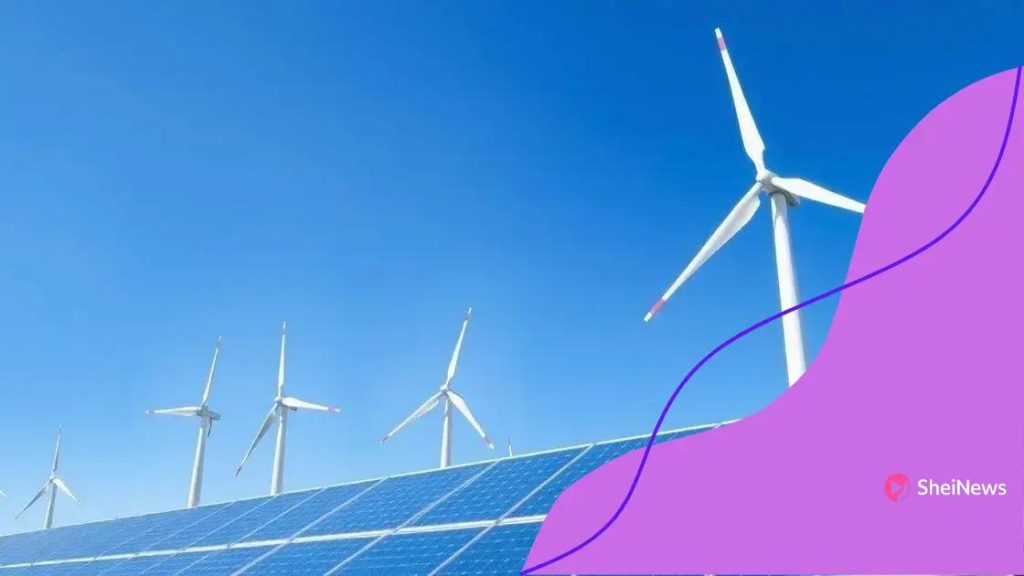Advancements in clean energy technology driving the future

Anúncios
Advancements in clean energy technology encompass innovations in solar, wind, and energy storage, promoting sustainability, efficiency, and decentralized energy production for communities.
Advancements in clean energy technology are critical for a sustainable future. Have you ever wondered how these innovations can impact our daily lives and help the planet? Let’s explore the exciting developments enhancing our energy landscape.
Anúncios
Overview of clean energy technology
Clean energy technology is essential for reducing pollution and fighting climate change. It encompasses various renewable energy sources that are both sustainable and environmentally friendly.
Understanding Clean Energy Sources
The main sources of clean energy include solar, wind, hydro, and geothermal power. Each of these technologies plays a significant role in transitioning from fossil fuels to more sustainable alternatives.
- Solar Energy: Harnesses sunlight using photovoltaic cells to generate electricity.
- Wind Energy: Utilizes wind turbines to convert wind into electric power.
- Hydropower: Generates energy from moving water, typically through dams.
- Geothermal Energy: Taps into heat from the Earth’s core for energy needs.
These technologies not only provide cleaner alternatives but also promote energy independence and security. For instance, solar panels allow homeowners to produce their own electricity, reducing reliance on the grid.
Anúncios
Innovations in Clean Energy
New innovations continually reshape how we generate and use energy. Advances in battery storage technology improve the efficiency of solar and wind systems, enabling a consistent power supply. Additionally, smart grid technologies enhance energy distribution and management.
As we invest in research and development, we can expect even more breakthroughs in clean energy. Emerging technologies, such as tidal energy and hydrogen fuel cells, are on the horizon, promising to expand our clean energy portfolio.
The shift towards clean energy technology is not just beneficial for the environment; it also creates jobs and boosts local economies. Communities embracing these technologies can experience increased job opportunities in installation, maintenance, and innovation.
Benefits of clean energy innovations
The benefits of clean energy innovations are profound and far-reaching. As society shifts toward renewable resources, we uncover numerous advantages for both the environment and the economy.
Environmental Benefits
One major advantage is the reduction of greenhouse gas emissions. Clean energy sources like solar and wind produce little to no emissions during operation. This shift helps combat climate change and improves air quality.
- Lower carbon footprint: Utilizing renewable energy sources significantly decreases individual and collective carbon footprints.
- Preservation of natural resources: Clean energy reduces dependence on finite fossil fuels, preserving them for future generations.
- Improved biodiversity: By shifting away from pollutants, we enhance the health of ecosystems, which benefits wildlife.
Beyond environmental impacts, clean energy innovations also have substantial economic benefits. Investing in these technologies creates jobs and stimulates growth.
Economic Growth
The clean energy sector is rapidly expanding, leading to new job opportunities in areas like manufacturing, installation, and maintenance. These jobs not only support local economies but also provide good wages.
Communities investing in clean energy often see lower energy costs over time. Once renewable energy systems are installed, they require minimal operational costs compared to traditional energy sources. This savings can be reinvested into the community, promoting even more growth.
Furthermore, advances in clean technology drive innovation, attracting investments that boost regional economies. For instance, cities recognized as green technology hubs can lure businesses, enhancing job offerings and economic resilience.
Key players in the clean energy sector

The clean energy sector is driven by various key players who contribute to its growth and development. These individuals and organizations play a crucial role in delivering innovative solutions and implementing sustainable practices.
Government and Regulatory Bodies
Governments worldwide are significant players in the clean energy landscape. They create policies that support renewable energy development and establish regulations to limit greenhouse gas emissions.
- Incentives and subsidies: Many countries provide financial incentives to encourage investments in clean energy.
- Regulatory frameworks: Establishing standards for renewable energy can promote safe and effective practices.
- Research funding: Governments often fund research initiatives that drive technological advancements.
These efforts create an environment conducive to growth and innovation in the clean energy market, fostering collaboration between the private and public sectors.
Private Companies and Startups
Private companies, from large corporations to innovative startups, also fuel the transition to renewable energy. These organizations develop and deploy clean energy technologies, making them more accessible.
For example, solar panel manufacturers and wind turbine developers continuously improve their products to enhance efficiency and lower costs. Startups often focus on groundbreaking technologies, such as energy storage solutions and smart grid technologies, which aim to make clean energy more reliable and effective.
Partnerships among these companies foster knowledge sharing and accelerate advancements, creating a synergistic effect that benefits the entire sector.
Nonprofits and Research Institutions
Nonprofit organizations and research institutions are vital players in promoting clean energy. They focus on advocacy, education, and research to advance the clean energy agenda.
By raising awareness and influencing public opinion, these groups help gain community support for renewable energy initiatives. Additionally, they often conduct critical studies that shed light on the environmental impacts of energy choices, guiding future policy and investment decisions.
Through collaboration with businesses and government entities, nonprofits and researchers ensure that clean energy remains a priority in the battle against climate change.
Recent breakthroughs in renewable energy
Recent breakthroughs in renewable energy technology are transforming the way we think about and utilize energy. Innovations are occurring across various sectors, making clean energy more efficient, accessible, and affordable.
Advancements in Solar Technology
Solar energy has seen remarkable progress. New materials, such as perovskite solar cells, offer improved efficiency compared to traditional silicon cells. These advancements allow for more energy to be harnessed from the sun.
- Higher efficiency rates: New solar panels can now convert over 25% of sunlight into energy.
- Lower production costs: Innovations in manufacturing processes have reduced costs, making solar more affordable for consumers.
- Flexible and lightweight designs: These new designs can be integrated into buildings and vehicles, expanding the use of solar energy.
Such enhancements make solar energy a practical option for a wider range of applications, paving the way for greater adoption.
Wind Energy Innovations
Wind energy is also evolving. Modern wind turbines are becoming larger and more efficient, capturing more energy per rotation. Innovations in turbine design, such as taller structures and larger blades, contribute to this efficiency.
Furthermore, offshore wind farms are gaining traction, as they can harness stronger and more consistent winds. These farms help to generate significant amounts of electricity for coastal communities. The development of floating wind turbines also allows for deeper water installations, enhancing the potential for energy generation.
Energy Storage Solutions
One critical breakthrough is in energy storage technologies. Quality batteries are essential for storing energy generated from renewable sources, especially solar and wind. Innovations in battery technology, such as lithium-sulfur and solid-state batteries, promise higher energy densities and longer lifespans.
This means that homes and businesses can store renewable energy more effectively, reducing reliance on fossil fuels and increasing overall energy resilience.
The synergy of these advancements in renewable energy plays a crucial role in combating climate change and promoting a sustainable future for all.
Future trends in clean energy technology
Future trends in clean energy technology promise exciting developments that can reshape our energy landscape. As innovations continue to emerge, they will enhance sustainability and drive down costs for consumers.
Integration of Smart Technologies
One major trend is the integration of smart technologies in energy systems. Smart grids can improve efficiency by managing supply and demand in real-time. These grids allow for better energy distribution and reduced waste.
- Demand response systems: These systems optimize energy consumption by adjusting usage based on availability and cost.
- Energy management systems: Homeowners can monitor and control their energy use, leading to savings on bills.
- Automated solutions: Automation can enhance the usability of renewable systems, making them more effective and user-friendly.
As these technologies become more commonplace, households and businesses will benefit from greater energy independence and reliability.
Advancements in Energy Storage
Another exciting trend is in energy storage. The development of more efficient batteries plays a crucial role in maximizing the use of renewable energy. Technologies such as solid-state batteries promise longer life and higher energy density.
These innovations enable better storage of solar and wind energy, making it easier to use this energy when needed. Enhanced storage solutions will allow consumers to rely less on traditional grid sources during peak demand times.
Decentralized Energy Production
Decentralization is also becoming more prevalent. Microgrids and distributed energy resources enable communities to generate their own power locally. This trend increases resilience and reduces dependence on centralized energy systems.
As more households install solar panels and wind turbines, we can expect a shift towards localized energy solutions. This change supports the growth of energy cooperatives and community solar projects, which empower individuals to take control of their energy future.
These trends in clean energy technology indicate a promising future that prioritizes sustainability and efficiency, paving the way for a cleaner planet.
In summary, advancements in clean energy technology are paving the way for a sustainable future. From innovative solar panels to efficient wind turbines, these developments are crucial in combating climate change and reducing our carbon footprint. With smart technologies improving energy management and breakthroughs in energy storage enhancing reliability, the path forward looks bright. Furthermore, the trend towards decentralized energy production empowers communities to take charge of their energy needs. Together, these elements create a more resilient and eco-friendly energy landscape for generations to come.
FAQ – Frequently Asked Questions about Clean Energy Technology
What are the main types of clean energy?
The main types of clean energy include solar, wind, hydro, geothermal, and biomass energy. Each has unique benefits and applications.
How do smart grids improve energy efficiency?
Smart grids optimize electricity distribution by managing supply and demand in real-time, which helps reduce waste and lowers costs.
What advancements are being made in energy storage?
Recent advancements in energy storage include newer battery technologies, like solid-state batteries, which offer higher energy density and longer lifespans.
How does decentralized energy production benefit communities?
Decentralized energy production empowers communities to generate their own power, increasing resilience and reducing reliance on traditional energy sources.





